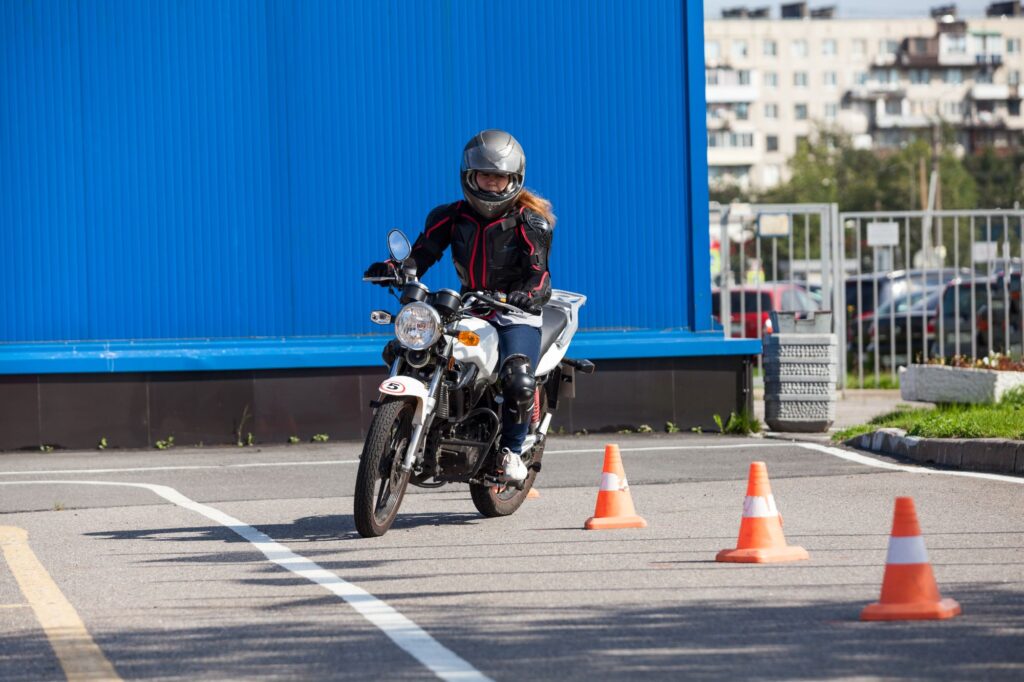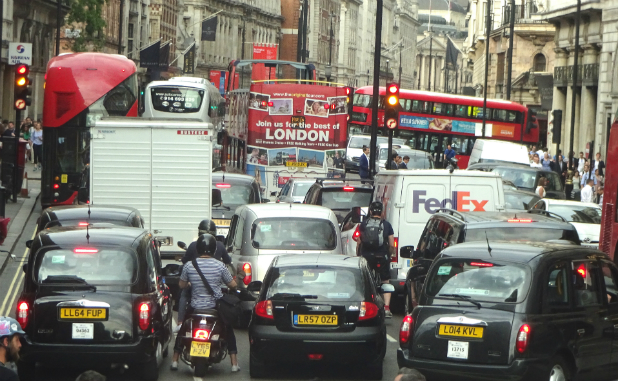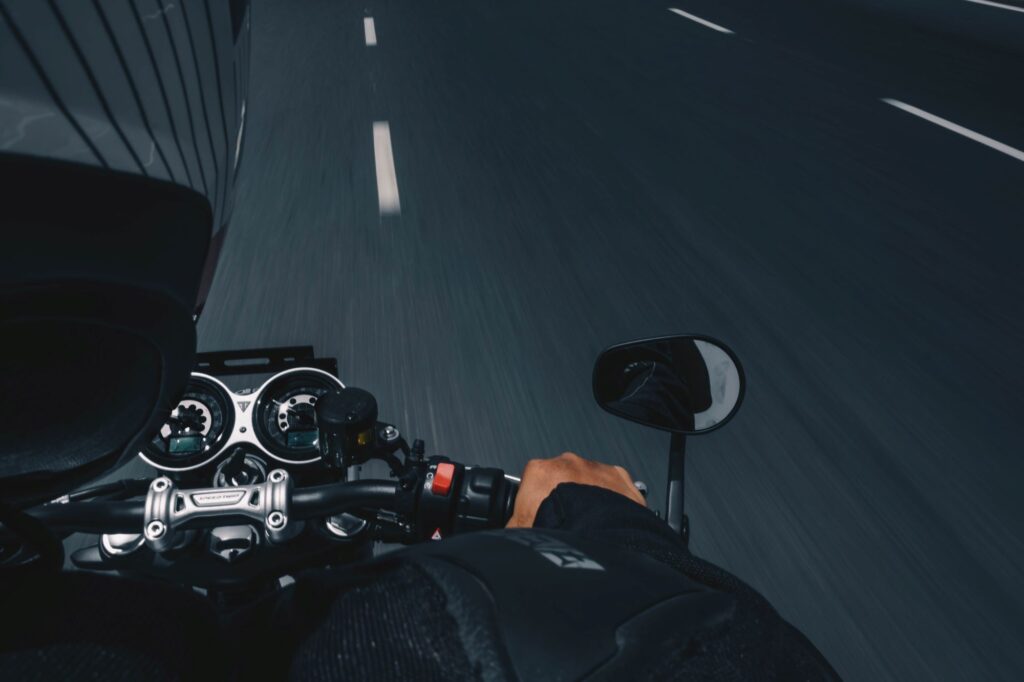During the first four decades of the 20th century, motorcycle racing evolved from niche interest to mass phenomenon.
1907 saw the first Isle of Man TT and the world’s first 24-hour endurance race at Brooklands. The world’s oldest trials competition, the Scottish Six Days, dates from 1909. But it was the years following World War One that things really took off, and the introduction of speedway in the late 1920s saw motorcycling become a national obsession.
This was helped by the other new sport that had reached mass popularity, greyhound racing. It was simple enough to repurpose a greyhound track for speedway, and up and down the country this is exactly what happened. Teams formed in towns and cities across the country, with stadiums capable of holding audiences of thousands being built for them to cheer their teams on to glory. Join us as Bikesure takes a trip down memory lane to the golden age of British Speedway.
1. Hyde Road Stadium, Manchester
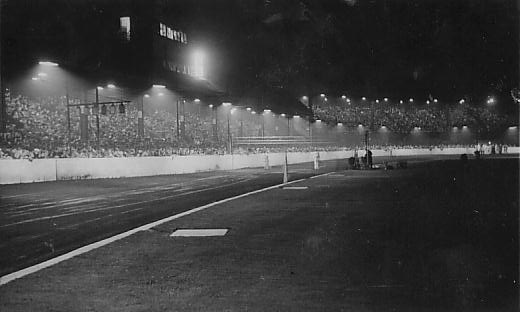
The original home of one of the oldest speedway teams in the UK, the Belle Vue Aces, Hyde Park Stadium claims to be the first purpose-built speedway stadium in the UK. Built on an existing athletics/cycling track, the first grass-track event took place in 1928. With the grass gone, the first speedway meeting was held in March 1929. During World War Two it was the only track in the country to continue operating, with over two million visitors.
Following the war, speedway once again took off nationally, and Hyde Road continued as the home of the Aces until it was demolished in 1987. The Aces moved to the nearby stadium on Kirkmanshulme Lane, itself the first greyhound track in the country, opening in 1927. This remained their home until the opening of the National Speedway Stadium in 2016.
2. Hackney Wick Stadium
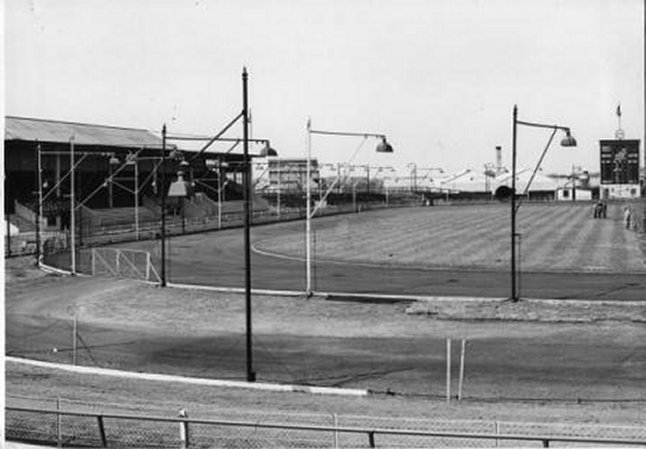
London’s East End stadium went through ups and downs during its lifetime, with four speedway teams calling it home, a sad decline during the 1990s being followed by a rebirth as the site of the 2012 Olympics. Originally opened in 1932, it was mainly used for greyhound racing until the Walthamstow Wolves moved from their home stadium and renamed themselves the Hackney Wick Wolves in 1934. There wasn’t the audience to sustain racing there, and in 1938 they swapped licenses with the Bristol Bulldogs, dropping down a tier in the process.
It wasn’t until 1963 that speedway returned to the stadium, this time as the home team of the Hawks. In 1972 Blue Peter visited the stadium to learn about speedway.
The Hawks remained there until 1983 when a new team, the Hackney Kestrels, took over until 1990. The firm owning the stadium went bust in 1997, and the site gradually became derelict. After London won the bid to host the 2012 Olympics the entire site was redeveloped, with the Media Centre occupying the space where the stadium used to be.
3. Wembley Stadium
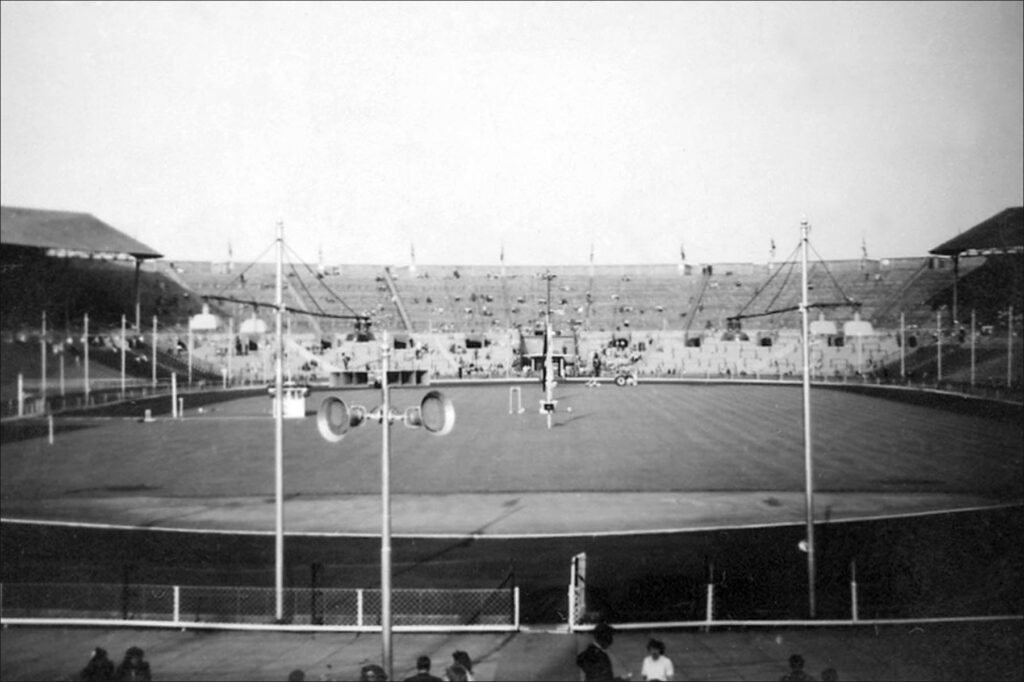
Officially named the Empire Stadium and built for the British Empire Exhibition of 1923, Wembley Stadium and its iconic twin towers became “Britain’s home of sport”, “The cathedral of football” and “The place where they did Live Aid”. Despite its long association with football, the original Wembley played host to a wide variety of sports during its lifetime, including speedway. Indeed, the stadium was home to a team – the Lions – who first made it their home in 1929 and stayed there (with a break during WW2) until 1957. In 1970 the Lions returned, but the increased use of the stadium by other sports made it difficult for regular speedway events to be held there, and the team only stayed in operation for two seasons before calling it a day.
In addition to its home team, Wembley regularly held world championship final events. Between 1949 and 1960 they took place there every year, and then another nine times until the final event in 1981. The fantastic amateur footage from 1975 above gives a glimpse into the atmosphere and the action visitors would have enjoyed. The original Wembley stadium was demolished in 2002, with its replacement opening in 2007.
4. Stanley Stadium, Liverpool
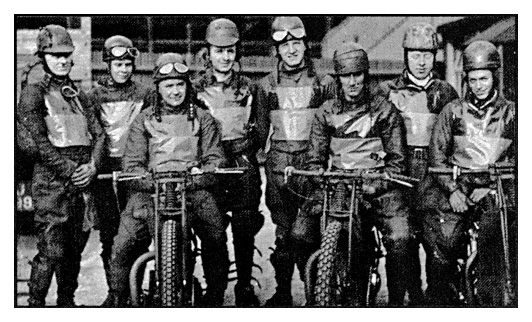
Whereas speedway has had a permanent presence in Manchester, it never reached the same levels of ubiquity in Liverpool. Liverpool’s first team, the Merseysiders, was formed in 1929 and competed in the first Northern League. Their home stadium was Stanley Stadium, in the Old Swan area of Liverpool. They were attached to Manchester’s Belle Vue Aces during that time but the club folded in 1937. It wasn’t until 1949 that Liverpool got a speedway team again, the Chads. Named after the iconic WW2 Mr Chad graffito, it was allegedly inspired by graffiti reading “Wot, no speedway?”
In 1951, the team moved up to Division Two, but once again were put on ice mid-way through the 1953 season when the track closed. There were two attempts to relaunch a new team in the late fifties, first as the Eagles and latterly the Pirates, but the track closed for the last time in 1960. The following year, Stanley Stadium was demolished and a market built in its place.
Pictured is the Liverpool team of 1937, we believe at Stanley Stadium.
5. Glasgow’s Blantyre Stadium
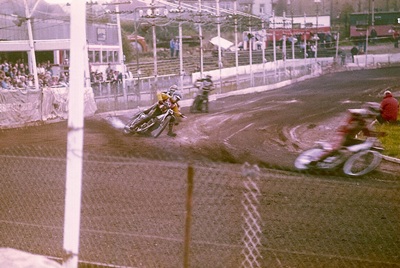
Glasgow probably has more ex-speedway stadiums than any other city in the United Kingdom, with at least nine sites over the years. There were a few false starts before Glasgow found its groove for speedway, with meetings being held at Nelson Athletic track, Carntyne Greyhound Stadium and Celtic Park in 1928 before finding success at the White City stadium in Ibrox.
There it stayed until 1968, as the official home of the Glasgow Tigers. After that, construction of the M8 motorway forced the team to move to Hampden Park, which is now the home of the Scottish national football team. Poor crowds and high costs saw the team move out of Glasgow to Coatbridge stadium until 1977, when they moved to Craighead Park where they remained until 1986. Both Coatbridge and Craighead were demolished, prompting another move to Shawfield Stadium, which is still going strong as a greyhound stadium. Since 1999 they have lived at the Ashfield Stadium.
6. Cornwall’s St Austell Stadium
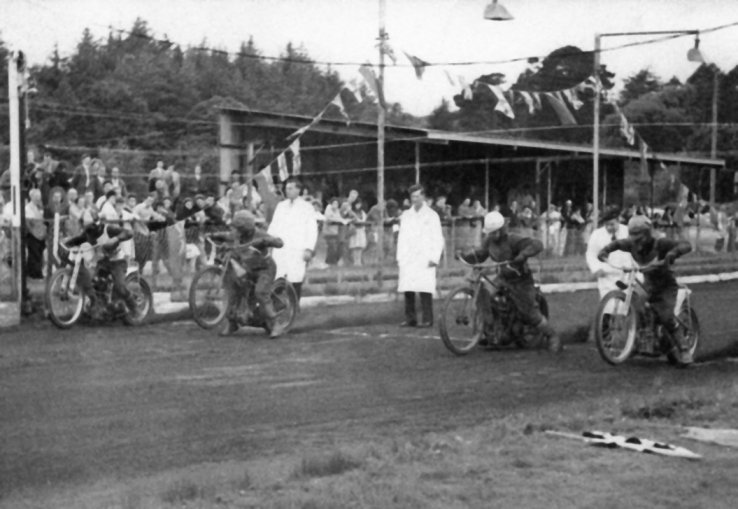
Cornwall’s legacy of speedway begins in 1949, with the opening of the Cornish Stadium near St Austell. This 360-yard circuit became home to the St Austell Gulls, who settled on that name after starting as the Pixies and then becoming the Badgers for a while. The Gulls were never massively successful, entering division three of the National League in 1950 and joining the Southern League in 1952, where they hovered around the bottom of the list. Given that this was a true grass-roots team in a part of the country that was even more isolated then than it is now, it’s not massively surprising they didn’t do better.
It does demonstrate how deeply the speedway bug had bitten the UK though, with enthusiastic teams popping up everywhere. Sadly, after the Southern League was disbanded in 1954 the Speedway Control Board revoked their licence. Despite one season of League racing in 1963, it wasn’t until 1997 that regular speedway fixtures returned to Cornwall. By this time the Cornish Stadium had been demolished and a market built on the site, but permission for a new stadium to be built in one of the many clay mines that dot the Cornish landscape was granted.
Clay Country Moto Parc, as it was known, may have had rather basic facilities – the referee’s hut was a converted double decker bus – but the dramatic cliffs of the mine made it a fantastic place to race, with the clay making the perfect natural racetrack surface. In 2001 the Gulls shut down and a new team, the Trelawny Tigers, took over. Sadly they too shut up shop only two years later, and since then Cornwall has been without a proper speedway track. Clay County continued to be mined, leaving no trace of the track today.
7. Bristol’s Knowle Stadium
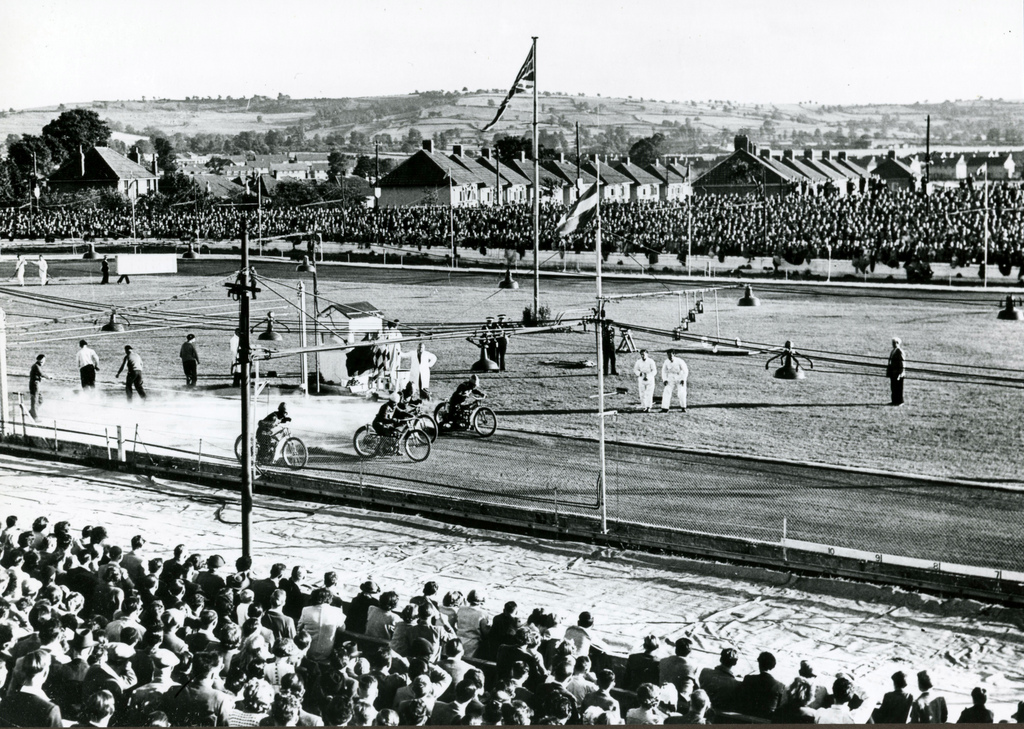
Staying in the West Country, Bristol is another city where speedway has an eventful yet patchy history. Originally opened as – you guessed it – a greyhound stadium in 1927, Knowle Stadium held its first speedway meeting the following year. Racing took a six-year holiday starting in 1930, before starting again in 1936. Its longest run at Knowle Stadium came after the war, with unbroken racing from 1946 to 1960.
These were the peak years in terms of the sport’s public popularity, with an average of 7,000 spectators every session, sometimes even as high as 20,000. In 1947, Laurel and Hardy, who were touring the UK at the time, visited the stadium. Bristol’s team, the Bulldogs, found some success during the 50s, reaching division one of the National League in 1950, before being demoted to division two in 1954. By 1960, attendance figures were falling, and speedway at Knowle finished at the end of the season. The following year greyhound racing ended too, and before long the stadium had been demolished. A housing estate was built on the site.
It wasn’t until 1977 that speedway returned to Bristol, taking place at Eastville Stadium, which was also the home of Bristol Rovers. Famous for having flowerbeds behind the goals, speedway only lasted two seasons there before stopping. Financial difficulties forced Bristol Rovers to move out in the mid-80s, while greyhound racing continued until 1997, but Eastville was then demolished and an Ikea built in its place.
The dream of speedway in Bristol isn’t completely dead though. In recent years there have been attempts to find a new site for a track. Sadly nothing has come of it yet, with council worries about noise pollution being the stated reason for the delay in securing a decision. The fact that Bristol still has active speedway fans trying to bring it back to their city nearly 40 years after the last regular race there speaks volumes to the strength of feeling the sport provokes.
8. New Cross Stadium, London
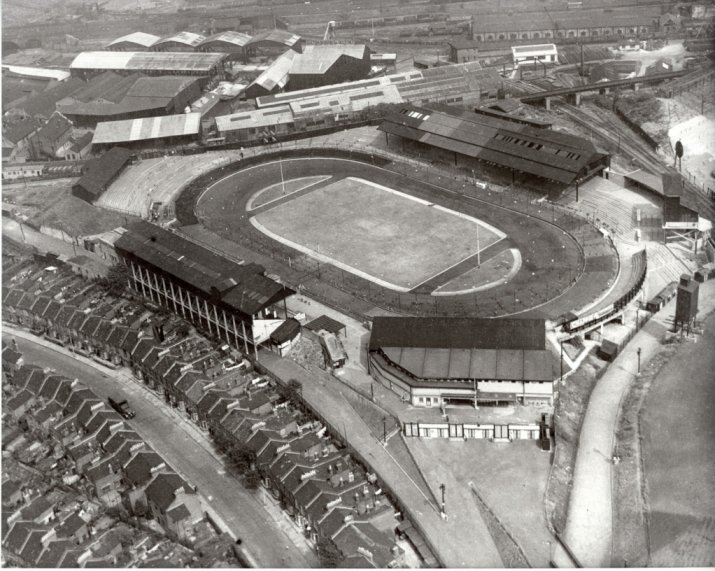
Originally built in the early 1900s as an athletics track, New Cross Stadium went on to become a greyhound/speedway racetrack. It arrived relatively late to the party, with speedway only starting in 1934, but it managed to pack a lot of history into the pre-war years. Not only was it the place where starting gates were developed, it was also home to three teams. First were the New Cross Lambs, who became the Tamers in 1936 before becoming the Rangers, who remained the home team until 1963. During these years it was known as London’s most popular track, with crowds of thousands coming out to enjoy the spectacle.
Regularly the location of international events, it also held the first stock car race in the UK in 1954. The decline in visitors was put down to the changeover from cinder tracks to shale, but by then the public’s taste in entertainment had been changed by TV and the end was nigh. Greyhound racing continued at the stadium until the end of the sixties, but by the time it came to be demolished in 1974 it was in a sorry state.
Happily enough, we can still see it at its peak in the late Forties, as it was used to film Once a Jolly Swagman, a speedway drama starring Dirk Bogarde, Bill Compo Owen, Thora Hird and Sid James.
9. Cradley Heath Stadium, Dudley
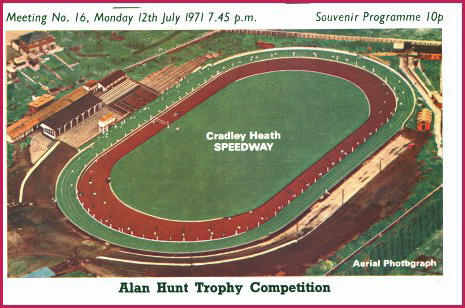
Cradley Heath Heathens are one of the speedway stories with a happy ending, having been reborn after the loss of their home stadium in the mid 1990s. Founded in 1947, the Heathens made their home on the site of a disused fairground in Cradley Heath. Attendances would regularly be in excess of 20,000, but after some success they were forced to stop in 1952 amidst financial difficulties.
The track reopened in 1959 for a one-off unlicensed meeting, and then again properly in 1960. They then operated there continuously until 1995, with their most successful years to date coming during the 1980s. Then in 1995, a change of ownership of the stadium saw the team suddenly evicted. The site was demolished and a housing estate built in its place, the only remaining clue of its history reflected in the street names – Stadium Drive and Racemeadow Crescent. The club attempted to survive, moving to another track in Stoke, but with attendance numbers down and mechanical problems plaguing the team, the decision was made to shut up shop in 1996.
But that wasn’t the end. As with Bristol, the supporter’s club stayed active in the following years, keeping the dream alive and campaigning for a new stadium. In 2010, they were successful, and temporarily renamed the Dudley Heathens while they waited to find a permanent new home. Currently based in Monmore Stadium in Wolverhampton, they have already surpassed their previous triumphs, coming first in the national league in 2013 and 2014.
Do you have memories of these dramatic former speedway theatres? Did you attend meetings there, or even ride in the races?

